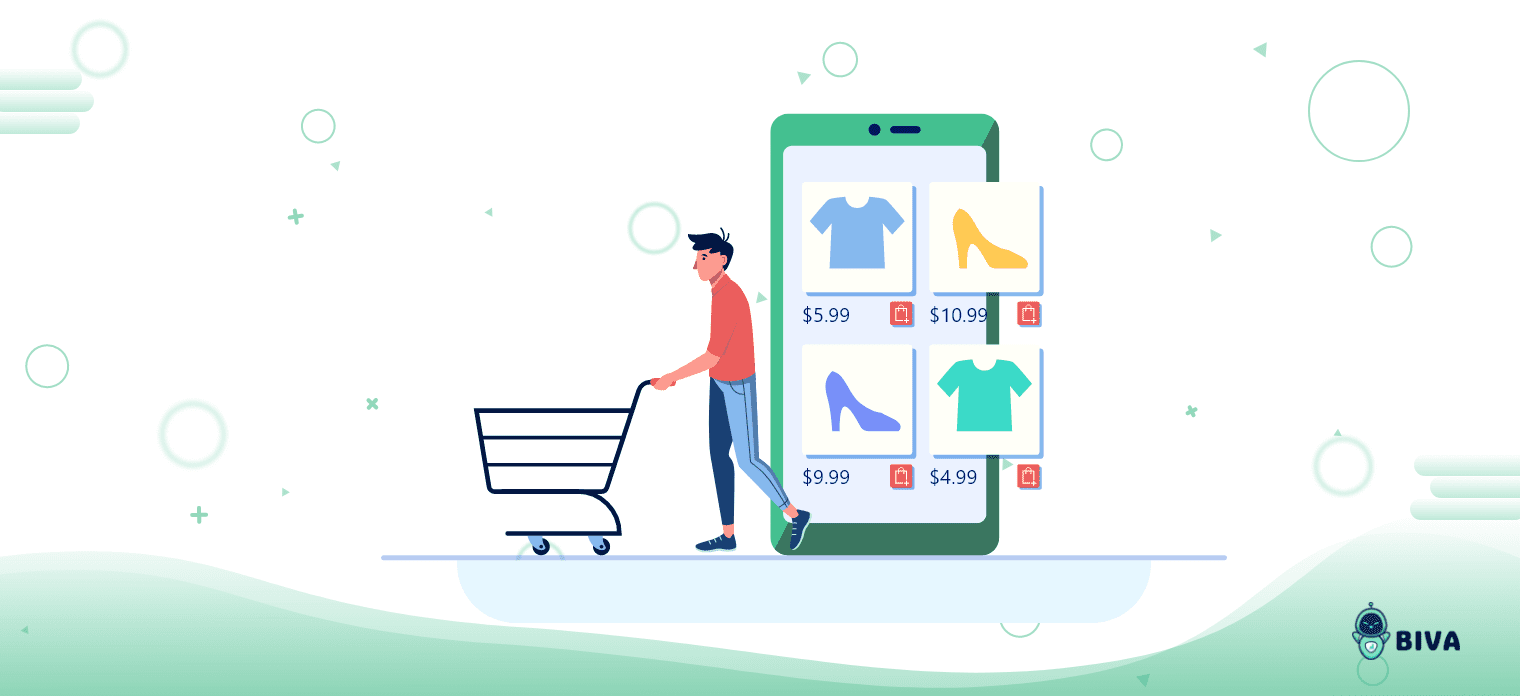

In the highly competitive digital world, e-retailers spend a considerable amount of their budget and effort on marketing activities to drive traffic to their website. However, the average conversion rate hovers only around 2.68%.
E-retailers continue to struggle with this leaky funnel, to which a high cart abandonment rate is the key contributor. It means the buyers add items to the shopping cart but don’t necessarily complete the transaction.
Studies estimate the average shopping cart abandonment rate to be around 75%.
Hence, retailers need to formulate strategies to tackle cart abandonment. They can tackle this problem by:
- Limiting shopping cart abandonment in the first place
- Recapturing shoppers who have left the cart
Let us discuss in detail the above two strategies:
Limiting Shopping Cart Abandonment in The First Place
In this scenario, retailers need to identify the typical pain points which their users encounter during the shopping experience that ultimately led to the user exiting the funnel. Subsequently, retailers should take measures to reduce such occurrences.
Some of the top issues have been listed below with possible solutions.
Transparency Regarding The Costs
A significant number of shoppers abandon their carts because of the hidden costs they only get to see during payment. The other reason is the unexpected shipping costs.
Add the price calculator at the product description page to enable users to see all the costs upfront – shoppers will not feel mislead by hidden fees. Also, use a personalized message bar to let customers know they can bypass shipping fees if they meet a certain threshold. It is a great way to increase AOV and conversions.
Alternative checkout options
Forcing shoppers to create an account might lead to shopper fatigue and cart abandonment.
In these Social media-driven times, provision for social checkouts is not only appreciated but preferred. It is one less password to remember.
Also, provide the “Checkout as Guest” option and make it as brief as possible to counter user resistance.
Progress Indicators and Product Thumbnails
Another common reason buyers abandon the shopping cart is the long and tedious checkout process with no indication of the finish line.
Add a progress timeline at the top of multistage checkout and remove unnecessary input fields. Additionally, provide thumbnail photos during checkout to keep the shopper interested long enough to complete the process.
The possibility to choose their billing address as shipping address with a single click will also prove very useful.
Trust Certificate
A substantial number of shoppers abandon carts due to trust-related concerns. Users do not trust websites that do not have security badges.
Partner with security service providers like Norton, MacAfee, and TrustE associated with SSL/ TSL. Additionally, display a relevant trust seal next to the CTA button to relieve the customer’s anxiety.
Multiple Payment Method Choices
Customers also sometimes abandon the purchase process due to the unavailability of desired (possible) payment options.
Consider offering multiple payment gateways (region-specific payment choices) and the option to remember payment details (provided there is high security to prevent hackers from accessing those details) to cater to multiple user preferences.
Page load speeds and site/ app crashes
In cases with website/ app crashes or slow site speed, customers often do not bother to go through the whole hassle of adding products to their carts and checking out again.
Make sure that the website/ app is free of bugs and functions smoothly. Verify if all the plugins are compatible with all browsers and there are enough memory and bandwidth on the server to deal with traffic spikes.
Recapturing Shoppers Who Have Left The Cart
Even after implementing the above changes on the website, some customers still decide to leave without purchasing. Re-engaging these shoppers with a mix of on-site and off-site marketing efforts (as below) can get them to reconsider making a purchase.
Exit-intent Pop-ups/ Promotional Discounts
Sometimes all that is needed to get shoppers to complete the transaction is a discount code for a percentage off on their purchase. Add a pop-up with a promotional discount that is triggered when customers abandon their shopping cart.
Ad Retargeting
Some shoppers need multiple touchpoints before they are ready to commit to a purchase. Ad retargeting is one of the proven ways to remind cart abandoners of the items they left in the shopping cart. Use multiple avenues like social media platforms (Facebook Ads, LinkedIn Ads), and Google Ads to display ads to those shoppers as they visit those sites.
Email Campaigns
Another way to get shoppers back to the store to complete their orders is through email campaigns. Setup personalized emails that get sent to the shopper if they do not finish their purchase. To make the most out of it, create a series of emails that will get sent out to that shopper at set intervals after they have abandoned the cart.
Also, make sure that the emails include:
- Pictures of the selected items
- Reviews or testimonials from other shoppers
- A clear call to action to guide them to the site
Data Analysis for Conversion Funnel Leaks
Sometimes, implementing the above-mentioned website changes and marketing promotions might not be sufficient to either limit the shopping cart abandonment rates or bring back the cart abandoners. As each e-commerce store is unique, one needs to analyze user behavior data specific to them (as below) to understand the pain points which lead to shopping cart abandonment.
Product/ Category Level Analysis
Monitor metrics like “cart abandonment rate” and “buy to cart rate” at the product/ category level to find products that are more often abandoned by customers. With this information, one can delve into the product-specific reasons (external/ internal) that lead to the cart abandonment – competitors offering the same product at lower prices or product attributes did not meet customer expectations.
Average Purchase Lag
Track the no. of days lapsed between adding product to the cart and final purchase to understand the correlation between time gap and cart abandonment rates. Generally, as the gap increases, the shopper’s intent to complete the purchase process dilutes. Hence, it is important to bring back the shopper to the site as early as possible and motivate him/ her to complete the purchase process.
Conclusion
Though shopping cart abandonment is common, it is not the end of the world. The combination of the above strategies will allow e-retailers to attain the two-fold goal of preventing cart abandonment and converting such carts into revenue. One thing is for sure there is good money in recovering abandoned carts!
Related Posts
Marketing Ideas
Product Foundations


